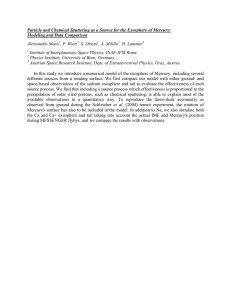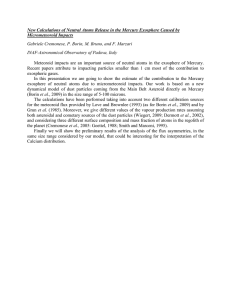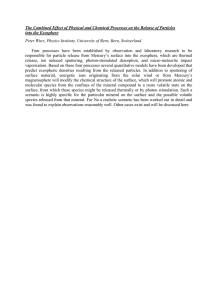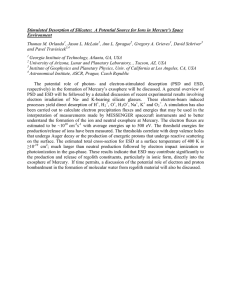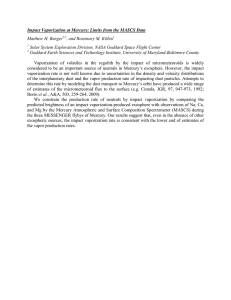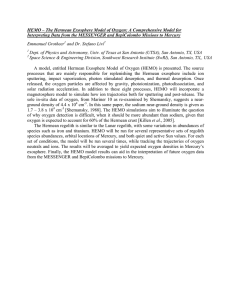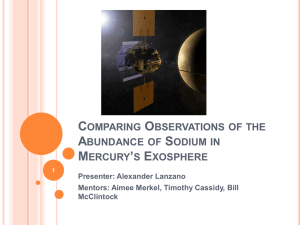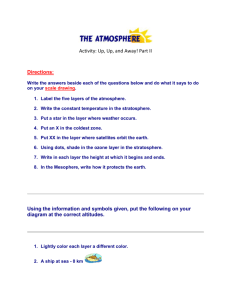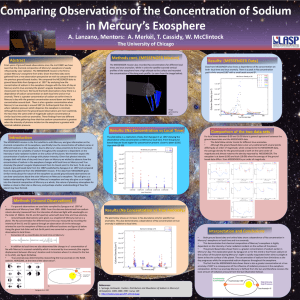Long-Term Supply of Volatiles and Refractories to the Exosphere of... Rosemary M. Killen and Ann L. Sprague
advertisement
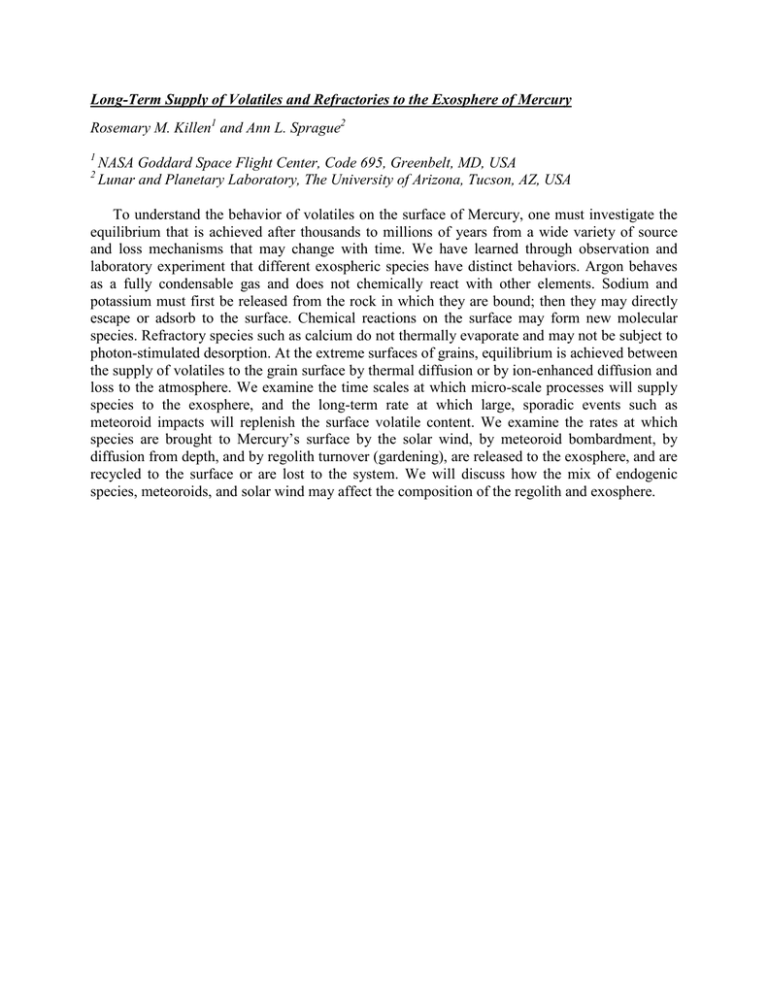
Long-Term Supply of Volatiles and Refractories to the Exosphere of Mercury Rosemary M. Killen1 and Ann L. Sprague2 1 2 NASA Goddard Space Flight Center, Code 695, Greenbelt, MD, USA Lunar and Planetary Laboratory, The University of Arizona, Tucson, AZ, USA To understand the behavior of volatiles on the surface of Mercury, one must investigate the equilibrium that is achieved after thousands to millions of years from a wide variety of source and loss mechanisms that may change with time. We have learned through observation and laboratory experiment that different exospheric species have distinct behaviors. Argon behaves as a fully condensable gas and does not chemically react with other elements. Sodium and potassium must first be released from the rock in which they are bound; then they may directly escape or adsorb to the surface. Chemical reactions on the surface may form new molecular species. Refractory species such as calcium do not thermally evaporate and may not be subject to photon-stimulated desorption. At the extreme surfaces of grains, equilibrium is achieved between the supply of volatiles to the grain surface by thermal diffusion or by ion-enhanced diffusion and loss to the atmosphere. We examine the time scales at which micro-scale processes will supply species to the exosphere, and the long-term rate at which large, sporadic events such as meteoroid impacts will replenish the surface volatile content. We examine the rates at which species are brought to Mercury’s surface by the solar wind, by meteoroid bombardment, by diffusion from depth, and by regolith turnover (gardening), are released to the exosphere, and are recycled to the surface or are lost to the system. We will discuss how the mix of endogenic species, meteoroids, and solar wind may affect the composition of the regolith and exosphere.
